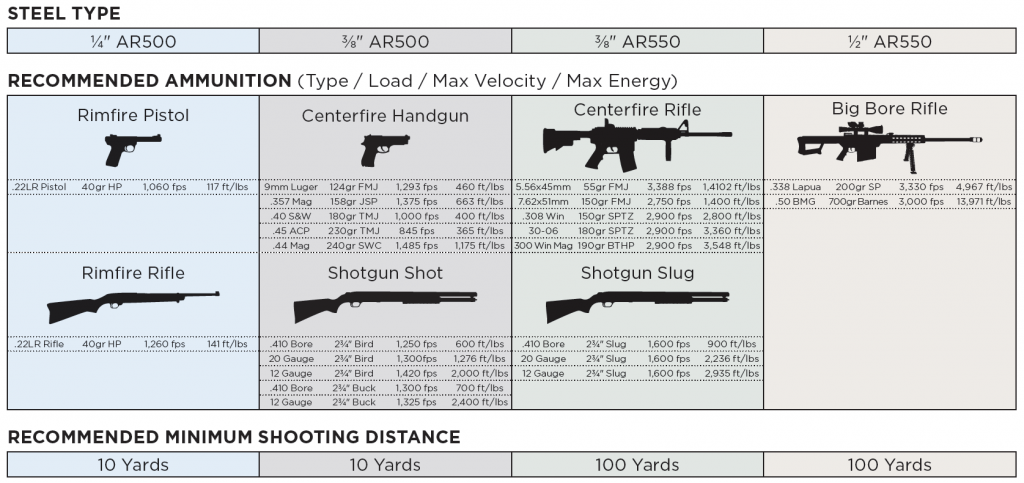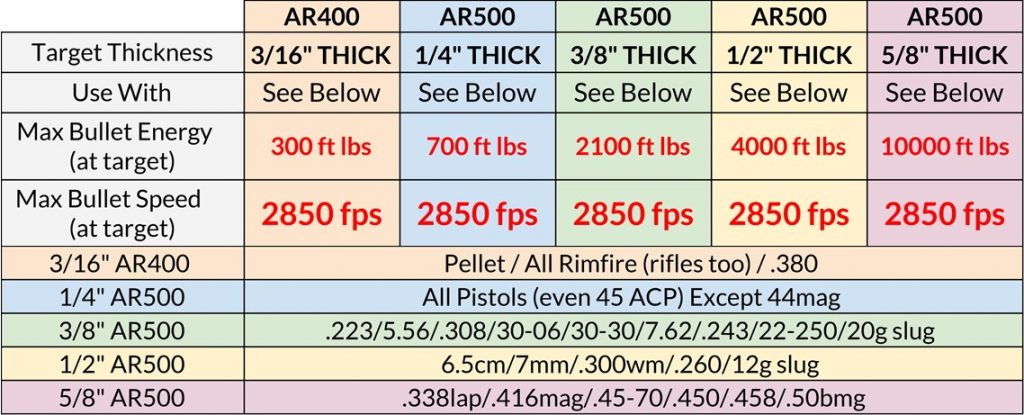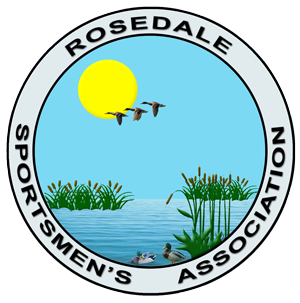NOTE: Failure to follow the rules and / or By-Laws could result in disciplinary action up to and including revocation of membership in the Club.
General
1. Observe the NRA firearm safety rules.
a. ALWAYS keep your firearm pointed in a safe direction.
b. ALWAYS keep your finger off the trigger until you are ready to shoot.
c. ALWAYS keep the firearm unloaded until ready to shoot.
2. When firearms are not in use or during a cease fire the firearms should be:
a. Unloaded with slide locked back
b. Unloaded with cylinder open
c. Unloaded with bolt open
d. Unloaded in holster or case
e. Muzzle loaders uncapped
3. All range hours are from 9:00 AM until dusk (except for scheduled events).
4. The use of glass or plastic bottles, rocks or hard breakable objects as targets is strictly prohibited.
5. Keep all firearm actions open when not shooting.
6. Don’t go down range until all other shooters are aware of your intent. Ask for a “CLEAR” and when all agree, you may proceed down range.
7. Tracer or armor piercing bullets are strictly prohibited anywhere on club grounds.
8. No “cowboy pistol quick draws” are permitted anywhere on the club grounds.
9. Don’t be a litterbug! Clean up the ranges after use, including picking up hulls and brass. The cleanup and lawn mowing details fall on a few dedicated members.
10. NO alcoholic beverages are to be used on any of our ranges or fields.
11. No shooting while trains pass (with the exception of the indoor & outdoor pistol ranges).
12. Applicants for membership must attend a regular monthly meeting for their application to be considered. The Board of Directors may grant an exception to this rule for individuals whose work schedule precludes attendance. For those rare incidences three or more Directors or Trustees must meet with the applicant along with their sponsor.
13. A member in good standing may hold only one position – Officer, Director or Trustee – at a time.
Archery Range
1. The archery range is designed for compound bows and recurve bows only.
2. Crossbows are prohibited on the archery range.
3. Broadheads are prohibited on the archery range.
4. Broached or expandable arrows are prohibited.
5. Archers are not allowed to retrieve arrows if other archers are shooting to their left or right.
6. Archers are not allowed to nock their arrow if anyone is retrieving arrows to their left or right.
7. Nocked arrows should be pointed downrange, in the direction of the target at all times.
8. Sky drawing is prohibited on the archery range.
9. Keep your arrows in your quiver until you are ready to shoot.
10. Firearms are prohibited on the archery range.
Indoor Pistol Range
1. The indoor range is closed during all scheduled events and when the kitchen/meeting room is in use.
2. Keys for indoor range may be purchased for $15. A short range briefing on hygiene and range operations is required in order to buy the key.
3. The only safe direction to shoot is towards the backstop. Targets can only be attached between the 2×4 backstop supports.
4. Do not shoot the center posts.
5. Do not point handguns upward when using the indoor range. Put your gun down if your arms need a rest. Remember there may be people overhead.
6. Only straight wall pistol cartridges may be shot in the indoor range. No necked down cartridges, rifle cartridges or shotgun shells.
7. Clean up brass before leaving.
8. A clean range is a safe range, if floor is gritty then use the push broom to clean range floor.
9. Turn down the heat before leaving the range.
Outdoor Pistol Range
1. Only straight wall pistol cartridges may be shot on the outdoor range. No necked down cartridges, rifle cartridges or shotgun shells.
2. NO steel targets are allowed.
3. Do not shoot outdoor target stands.
4. Clean up brass before leaving.
5. Vehicles are not permitted to drive up to the range unless you have a handicap placard.
Shotgun Fields
1. Shotgun field shooting hours are 4:00 pm to 10:00 pm Wednesday, Thursday.
2. Weekend time and dates are as listed on club website calendar.
3. Check down range before shooting. Ensure no one is using rifle range before opening a shotgun field.
4. Place sawhorse barricade across road to rifle range prior to opening shotgun fields. Last person remove barricade when finished shooting.
5. Keys for the skeet and trap house may be obtained by taking short briefing on safety at the shotgun fields and the operation of skeet/trap houses and overhead lights.
6. At night turn lights on slowly. Wait 1 minute between switching each light breaker. Our electric is billed on peak usage, spiking the current increases the rate for the entire month.
7. Pick up shotgun hulls after your round of shooting.
8. Shot size 7 1/2 or smaller is permitted on shotgun fields.
9. Reload the machines at the end of your round.
10. After reloading skeet/trap machine please remove empty clay bird target boxes and put on the burn piles or in garbage bins.
5 Stand
1. 5 Stand shooting hours are 4:00 pm to 10:00 pm each Wednesday
2. Weekend time and dates are as listed on club website calendar.
3. Shot size 7 1/2 or smaller is permitted on 5 stand.
4. Pick up shotgun hulls after your round of shooting.
Outdoor Rifle Range
1. Tannerite is NOT allowed
2. Check the range for hazards prior to use. Check to make sure no one is observing from the shotgun fields.
3. Observe commands from the Range Safety Officer (RSO). If no RSO is present then observe cease fire and commence fire agreements between the other shooters.
4. Four permanent target racks are located at rifle range. Targets can only be placed (stapled/taped) on the vertical furring strips. No targets are to be placed in front of metal uprights or 2×4 cross pieces.
5. Only paper and steel targets designed for shooting are to be used, paper targets are preferred. It is your responsibility to remove all targets and stands from the range at the end of your shooting session. Please leave the range cleaner than you found it.
6. Spent brass must be swept up and disposed of at the end of your shooting session.
7. No handling firearms while any person is down range.
8. Do not move forward of the firing line while range is hot.
9. Do not shoot outdoor target stands.
10. The 300 yard bench is open only when no one is present at the pavilion benches. The pavilion benches have priority over the 300yd bench.
Steel Target Guidelines
Steel hardness is essential to the quality of a steel target. Through hardened, abrasion resistant (AR) steel is available in Brinell Hardness Levels from AR350-AR700. The lower the number, the softer the steel and the higher the number, the more brittle the steel. Use only AR500 or AR550 steel because they provide the perfect balance of toughness and strength for shooting.
Steel targets need to have a perfectly flat surface in order to be safe for shooters and bystanders. The use of brackets and bolts to hold targets in place creates angles that make bullet splatter unpredictable.
The angle of the steel target makes a dramatic difference in the way that the splatter reacts. The steeper the angle, the more splatter is deflected towards the ground and the more the energy is dissipated.

When setting up multiple steel targets consider the effects of secondary splatter. To prevent splatter from hitting other targets, ensure that the targets are outside the 20º splatter zone of another target. Also, the ground where targets are placed can affect splatter. Avoid ground with rocks and cement. Sand, wood chips, grass, and fine gravel generally make the best base. Also, ensure that the ground is clear within the in the splatter area.

The following chart shows the steel types that Action Target uses in it’s targets as well as the maximum ammunition recommendations and minimum shooting distances for each. Because of the wide variety of ammunition the following chart is for reference only and is not all inclusive. Also ammunition must be soft (such as lead) or frangible. Frangible ammunition requires the same shooting distances as traditional lead ammunition. Smaller ammunition will work on higher-rated targets, although rimfire ammo may not be able to move heavier reactive plates. To ensure that your ammunition is compatible with your target and distance, take your first shot and then inspect for damage. If there is a crater or pock mark, increase your distance. Handguns and shotgun shot loads can be used on rifle targets at 10 yards, however, once the target has been shot with a centerfire rifle round or shotgun slug, it needs to be inspected for integrity. If there is any visible damage to the target, such as pocking or cratering, the target should not be used at distances closer than 100 yards with any type of firearm or ammunition.


